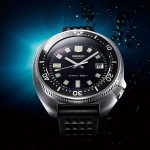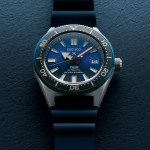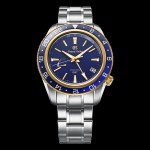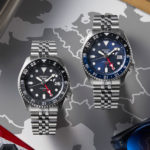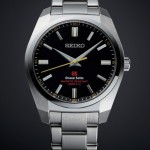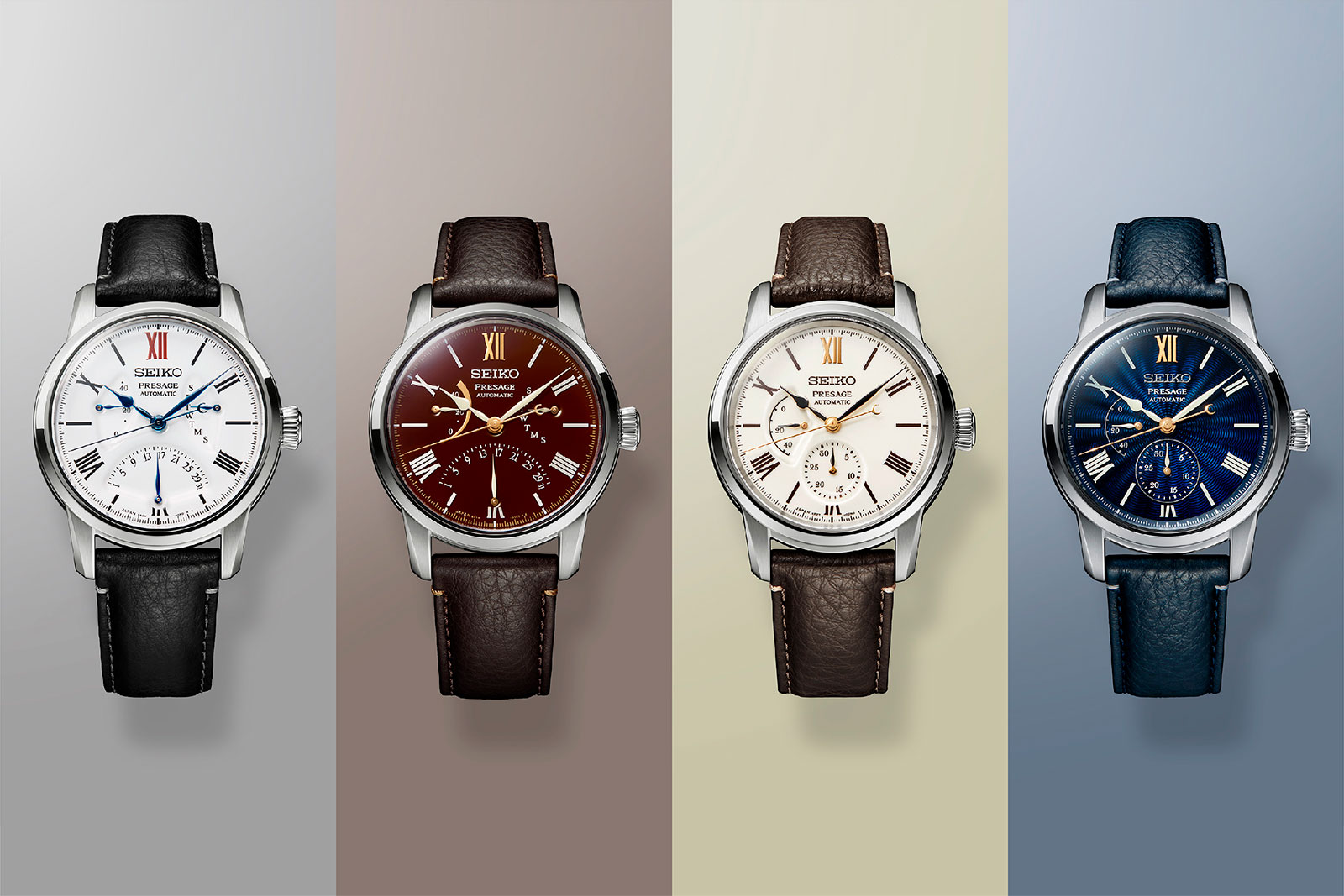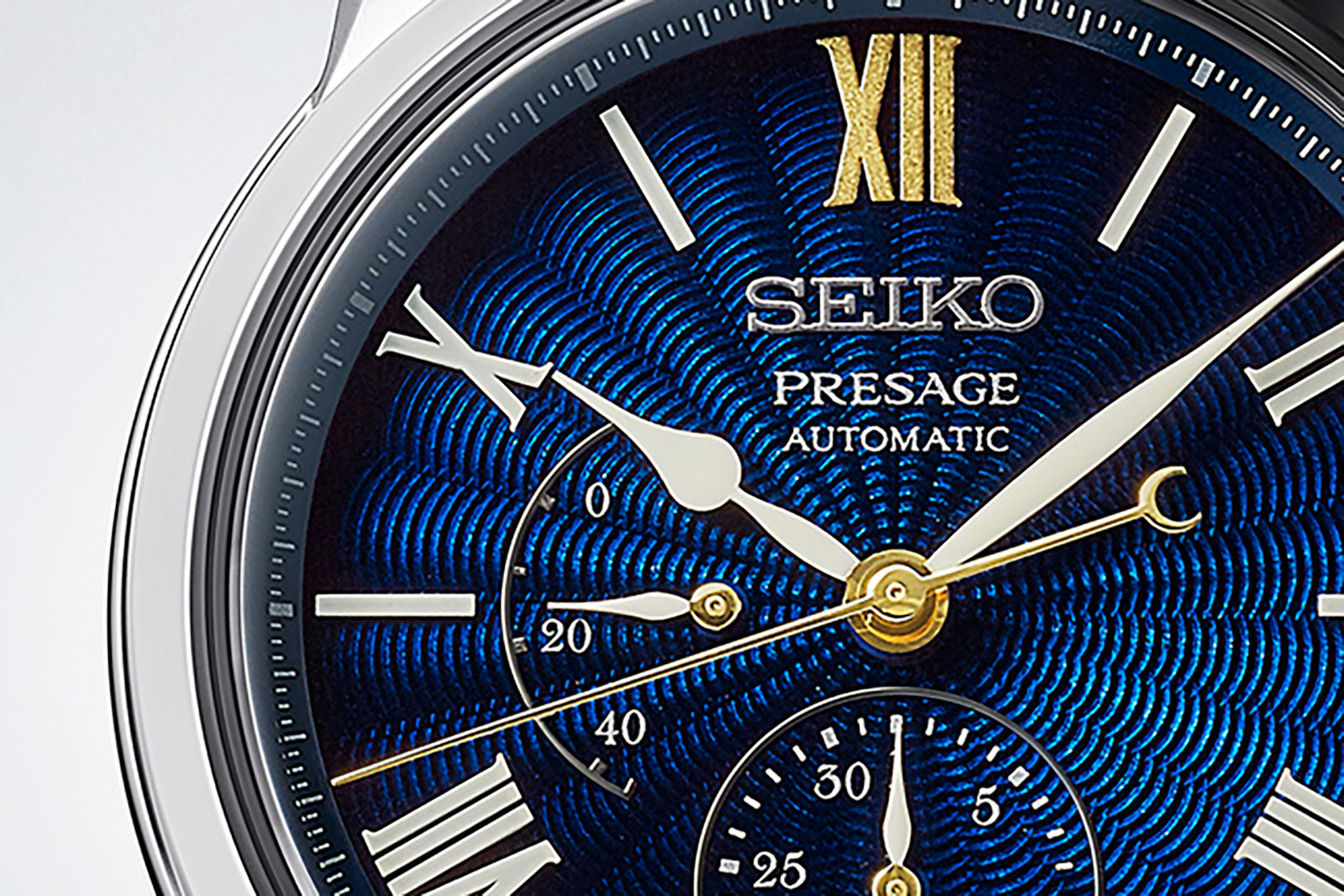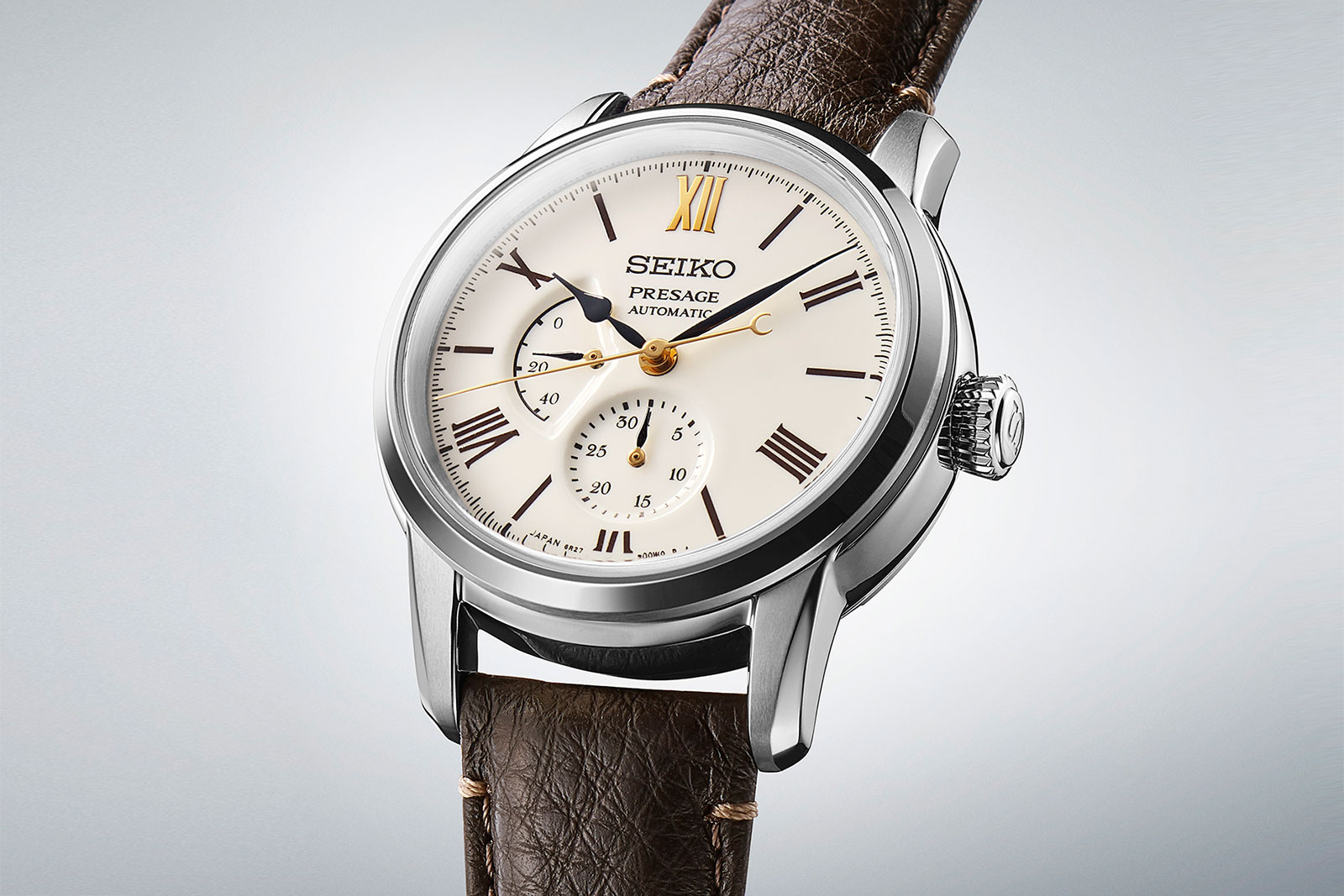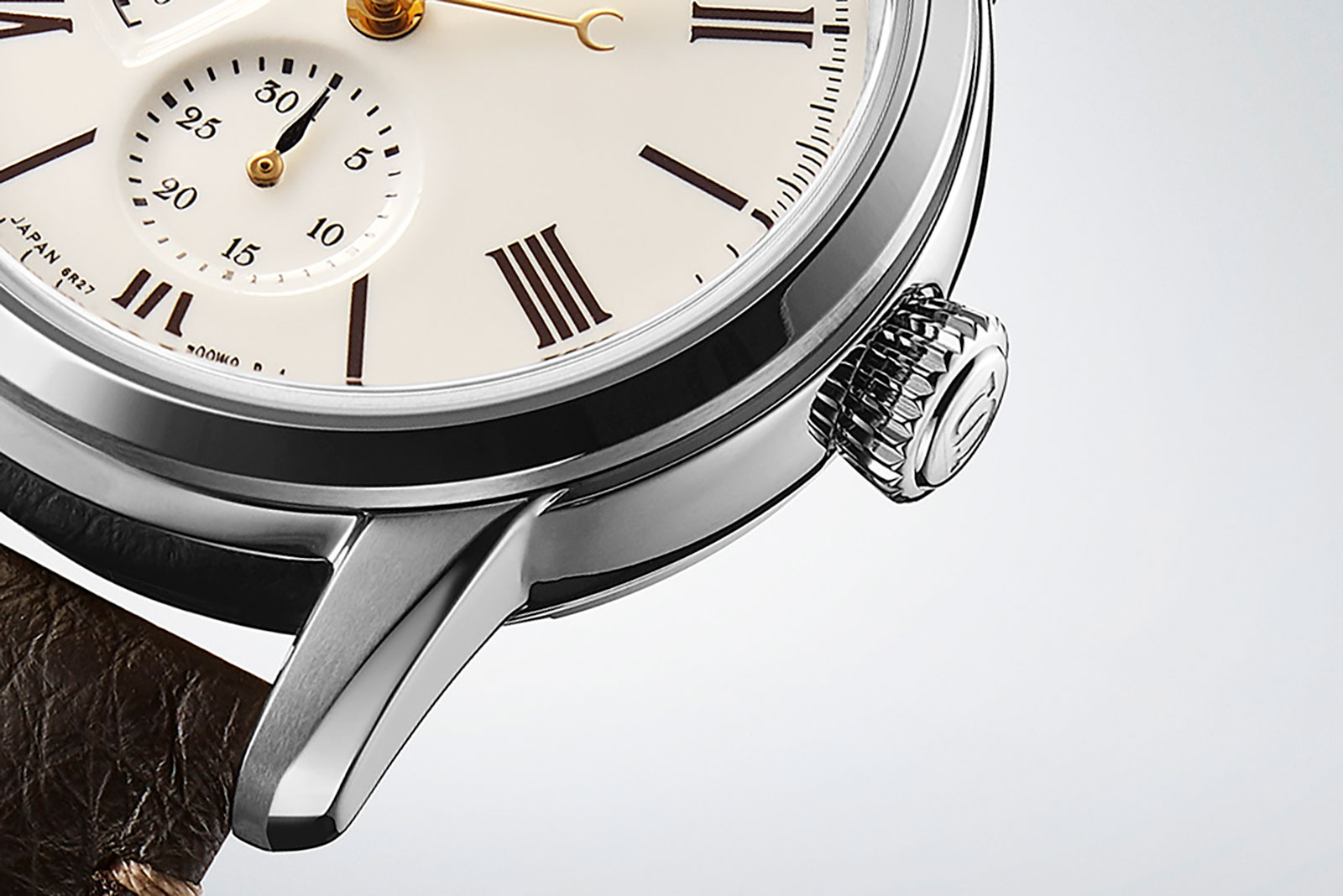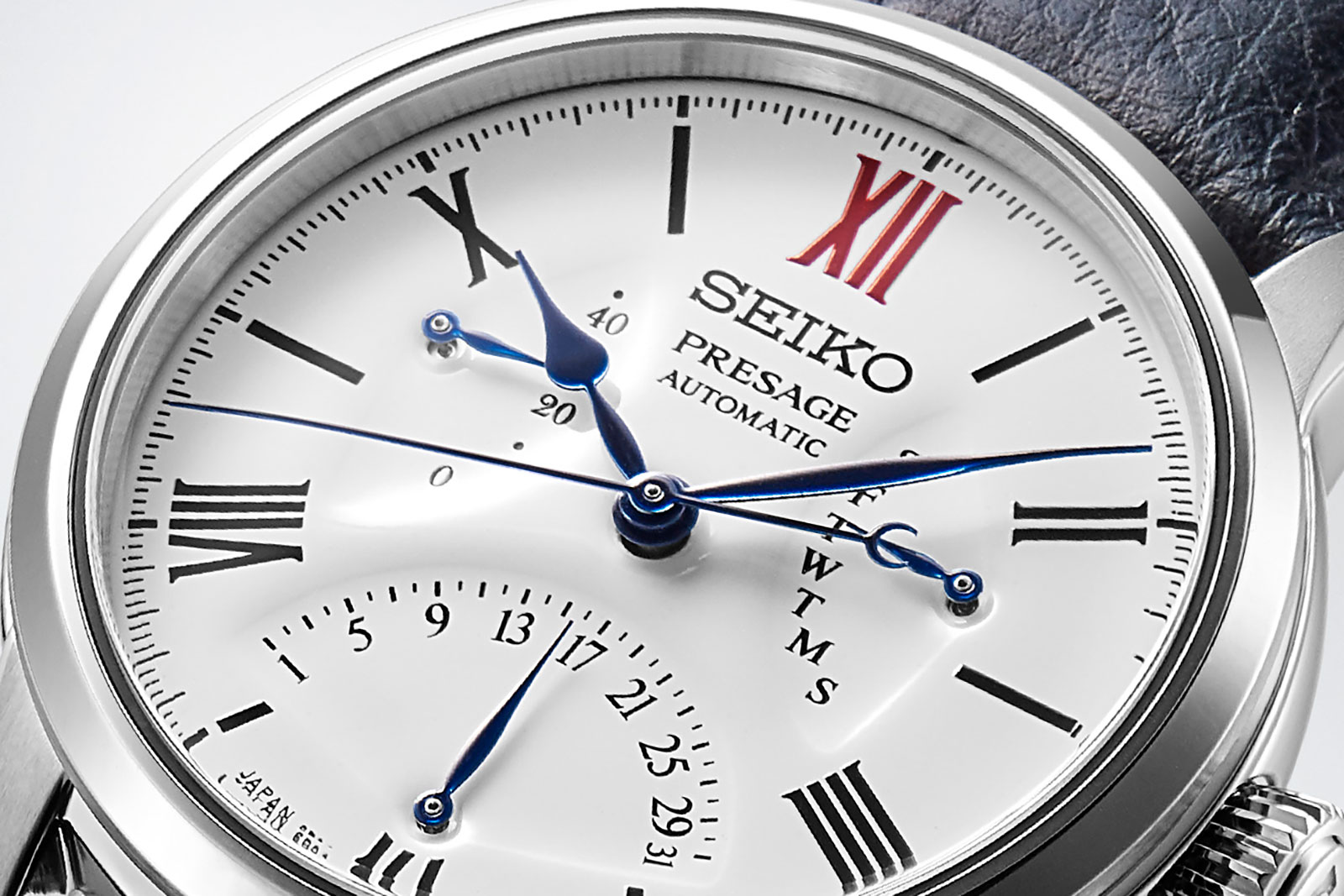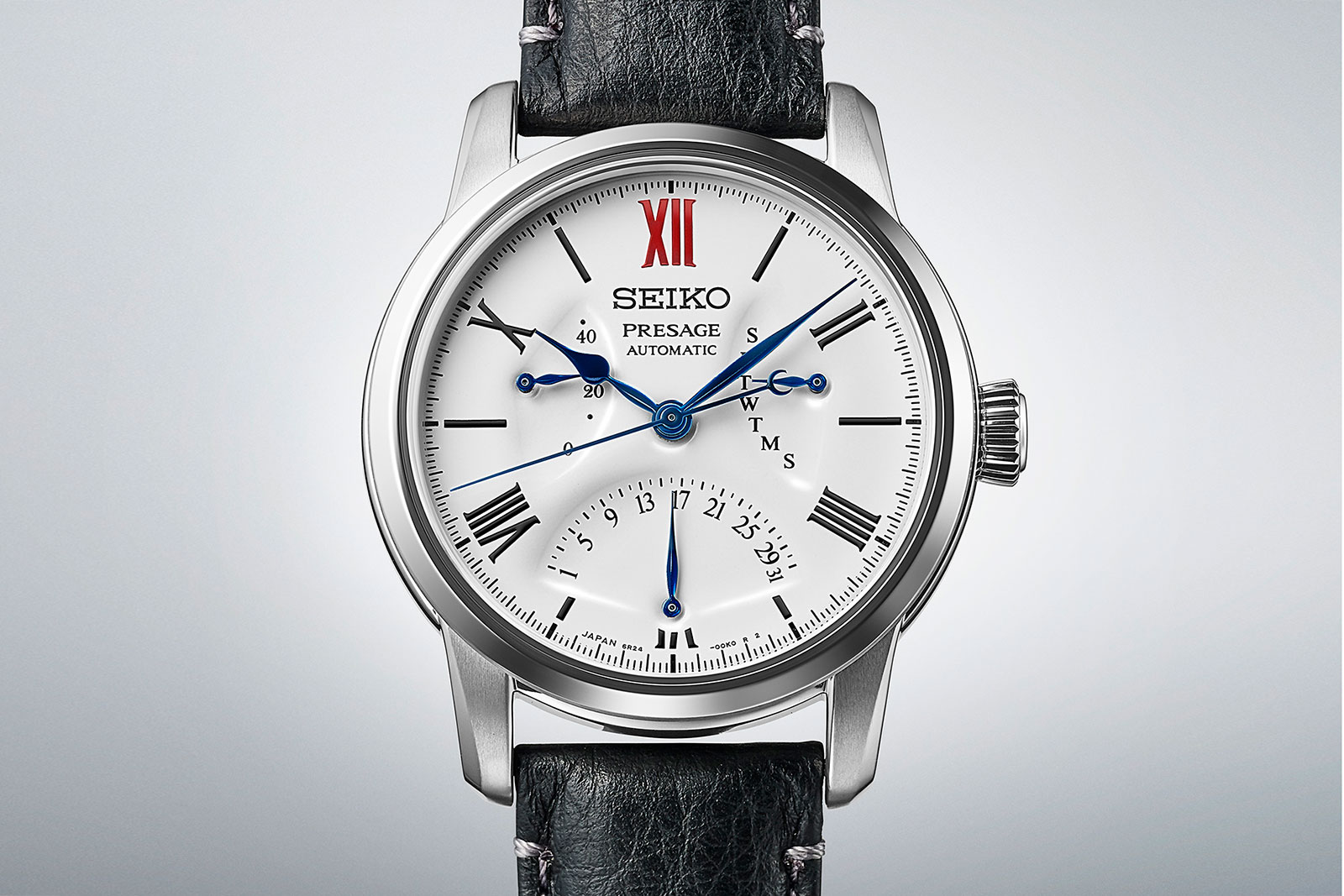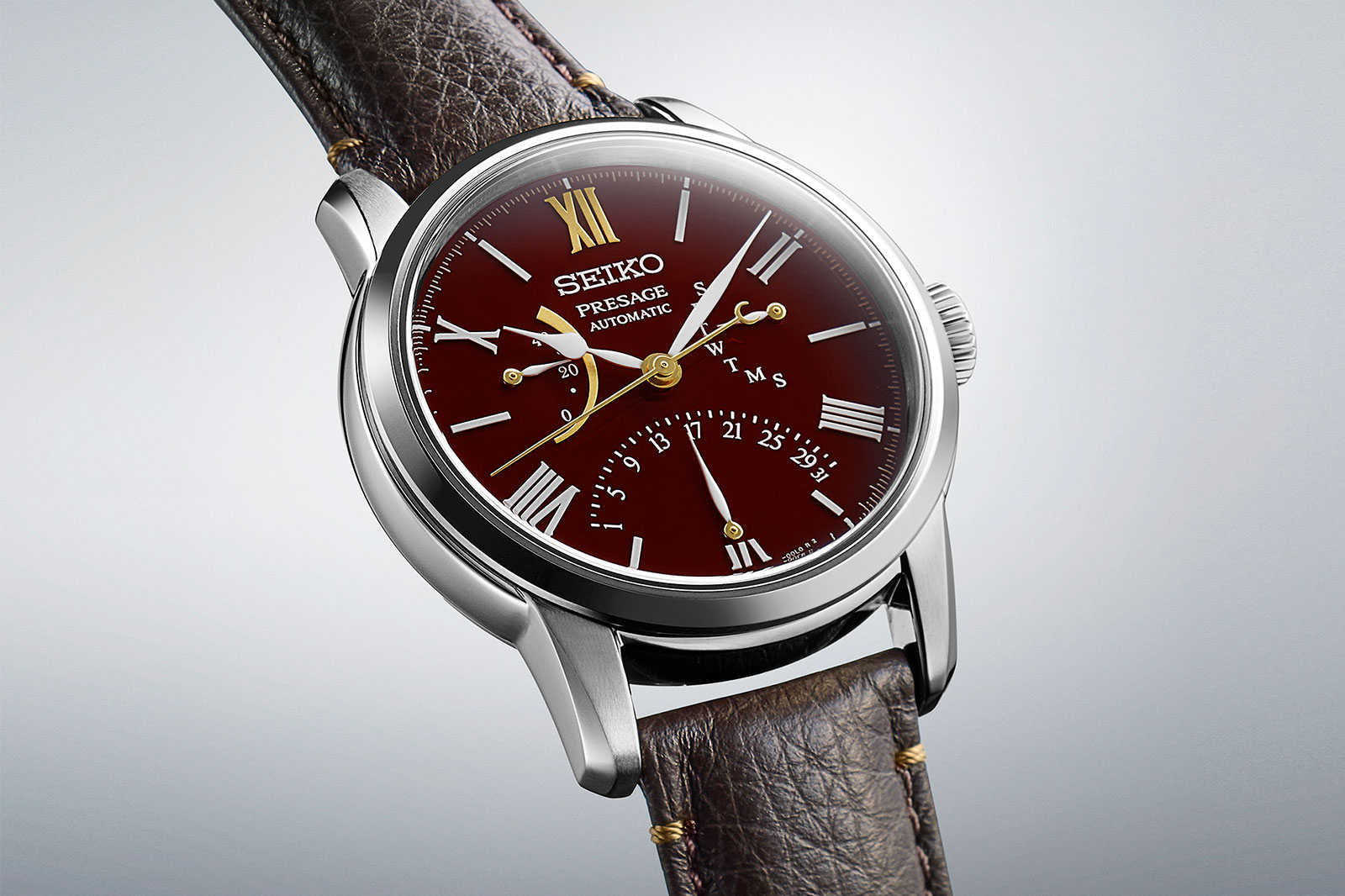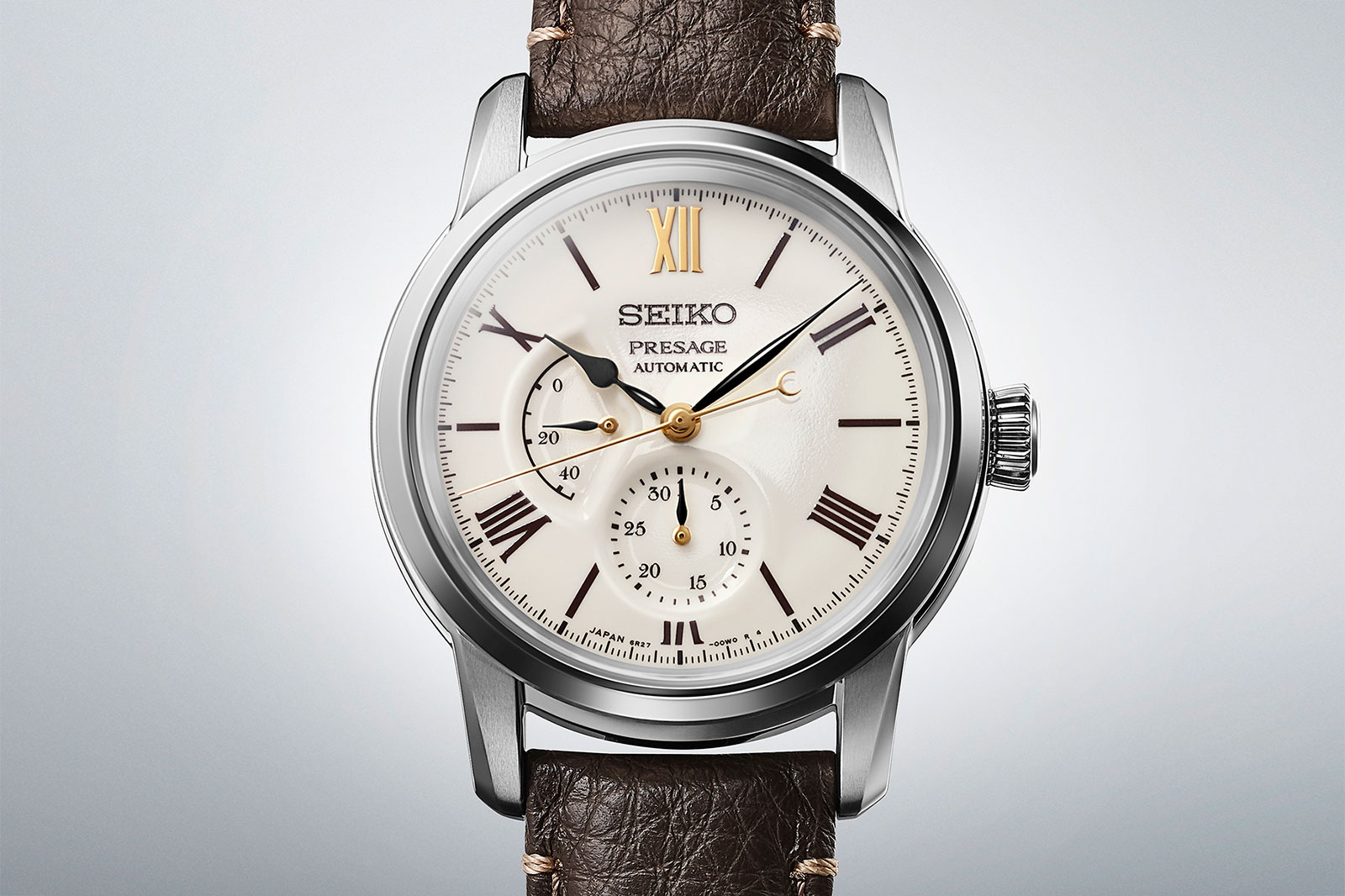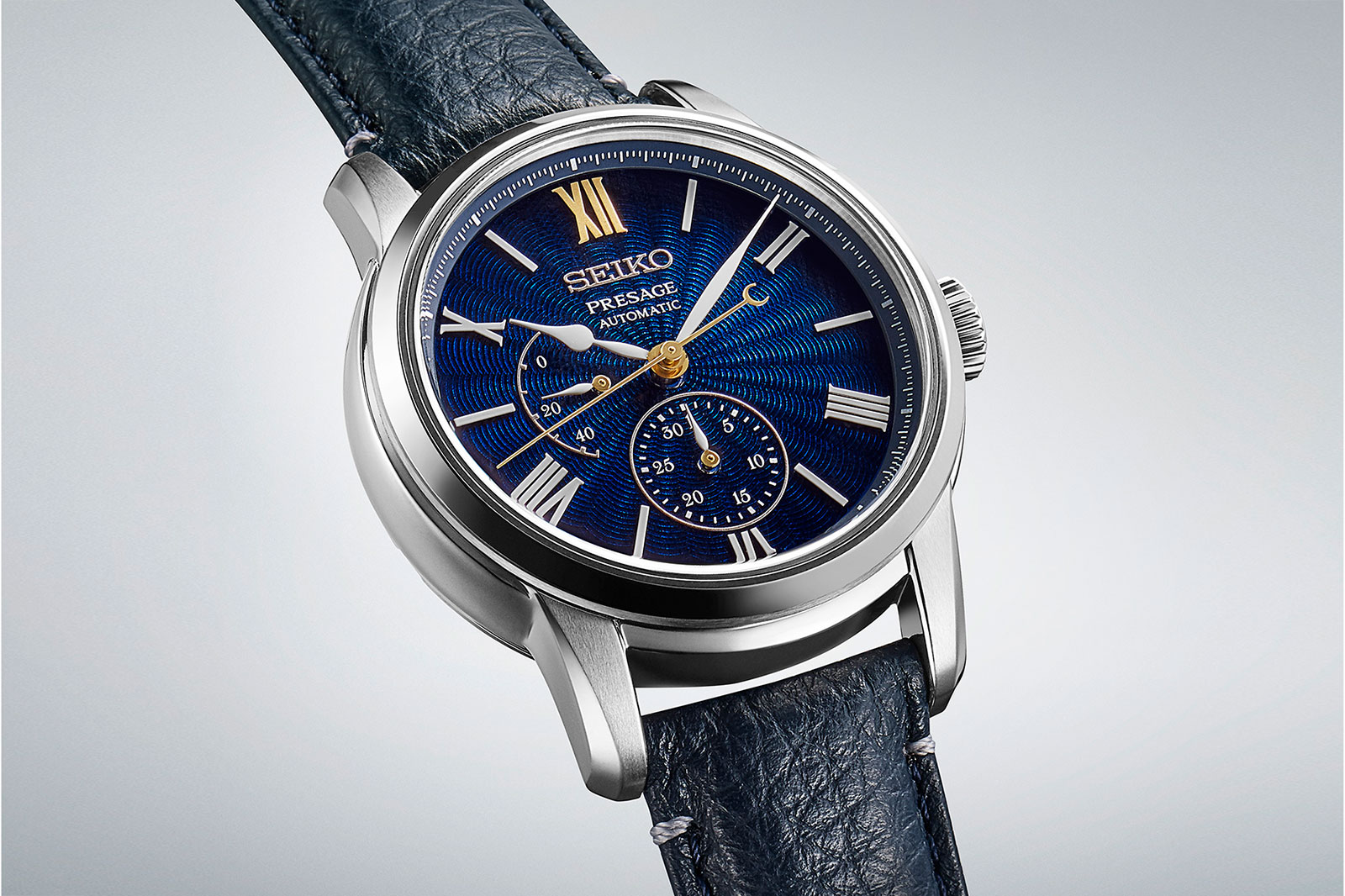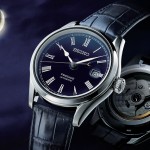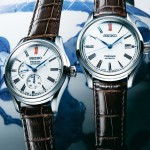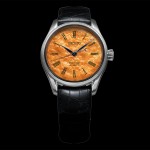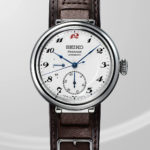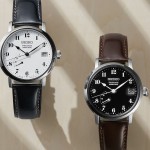Seiko Introduces Prospex 1968 Diver’s GMT
A retro diver gets a second time zone.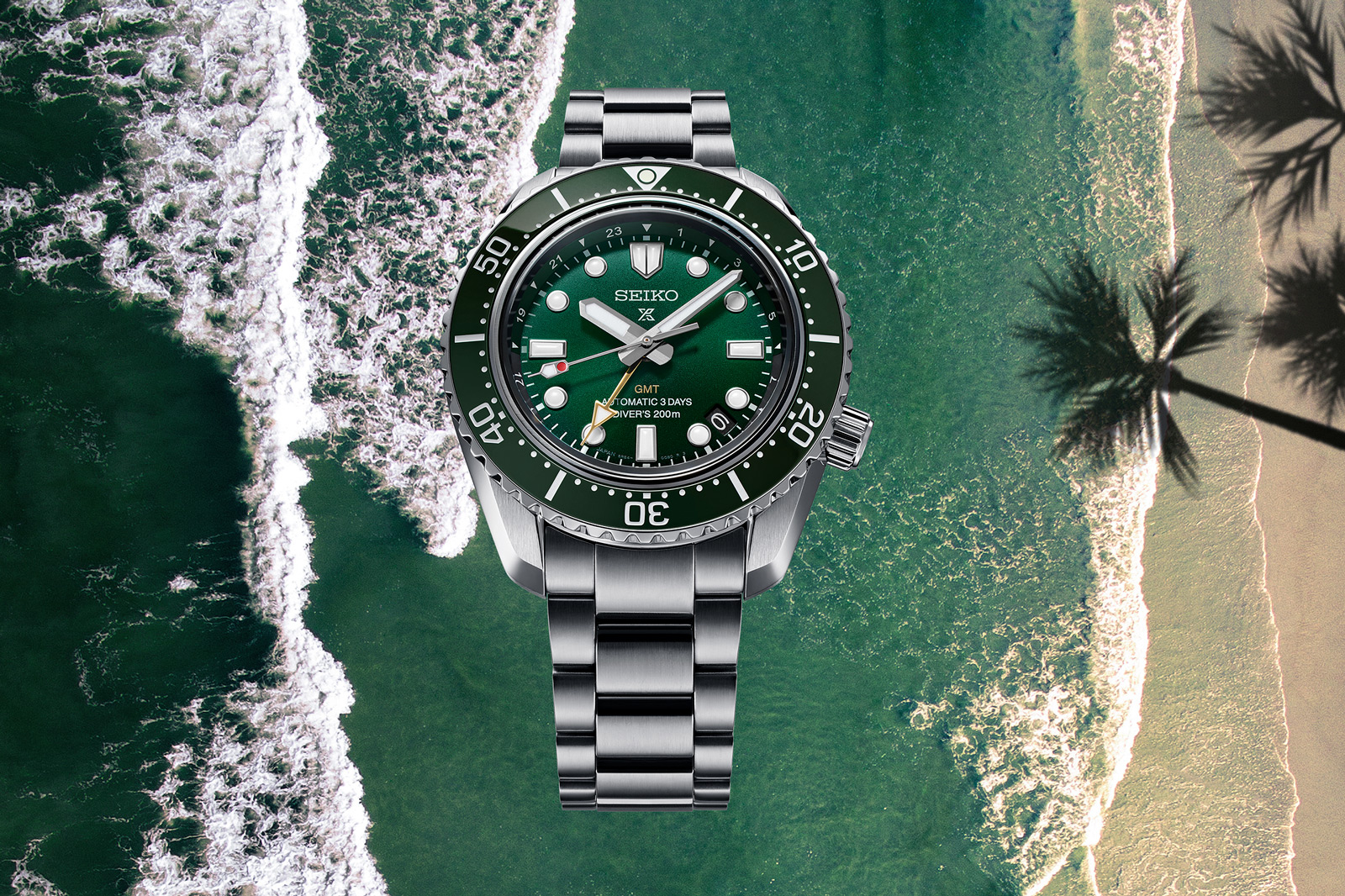
Responsible for some of the most reliable and well-priced diver watches on the market, Seiko is synonymous with the genre. The Japanese watchmaker continues to expand its dive watch offerings, but now with a second time zone complication.
A “modern reinterpretation” of its Hi-Beat 300 m dive watch from 1968, the Prospex 1968 Diver’s GMT is the first mechanical dual-time zone dive watch in Seiko’s Prospex sports watch collection.
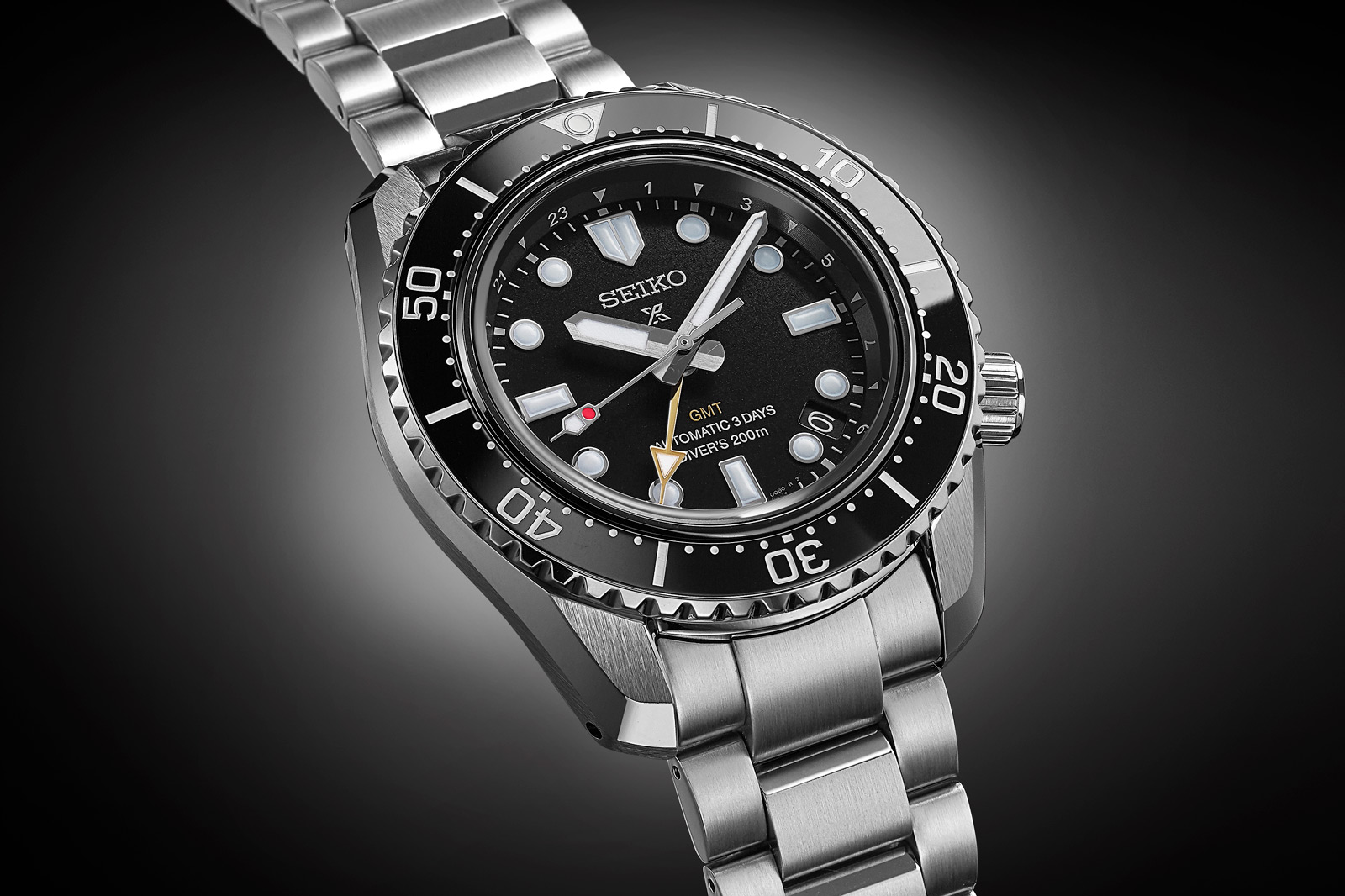
The SPB383
Initial thoughts
Arguably the collection offering the best value in Seiko’s line-up, Prospex is going slightly upscale with the second time zone movement, while maintaining its strong price-performance ratio.
The standout among the new models is the SPB381 with its deep green dial. While the limited edition SPB385 with its textured, “ice blue” dial is undoubtedly fancier, the SPB381 is clean and functional but appealing with its palette.
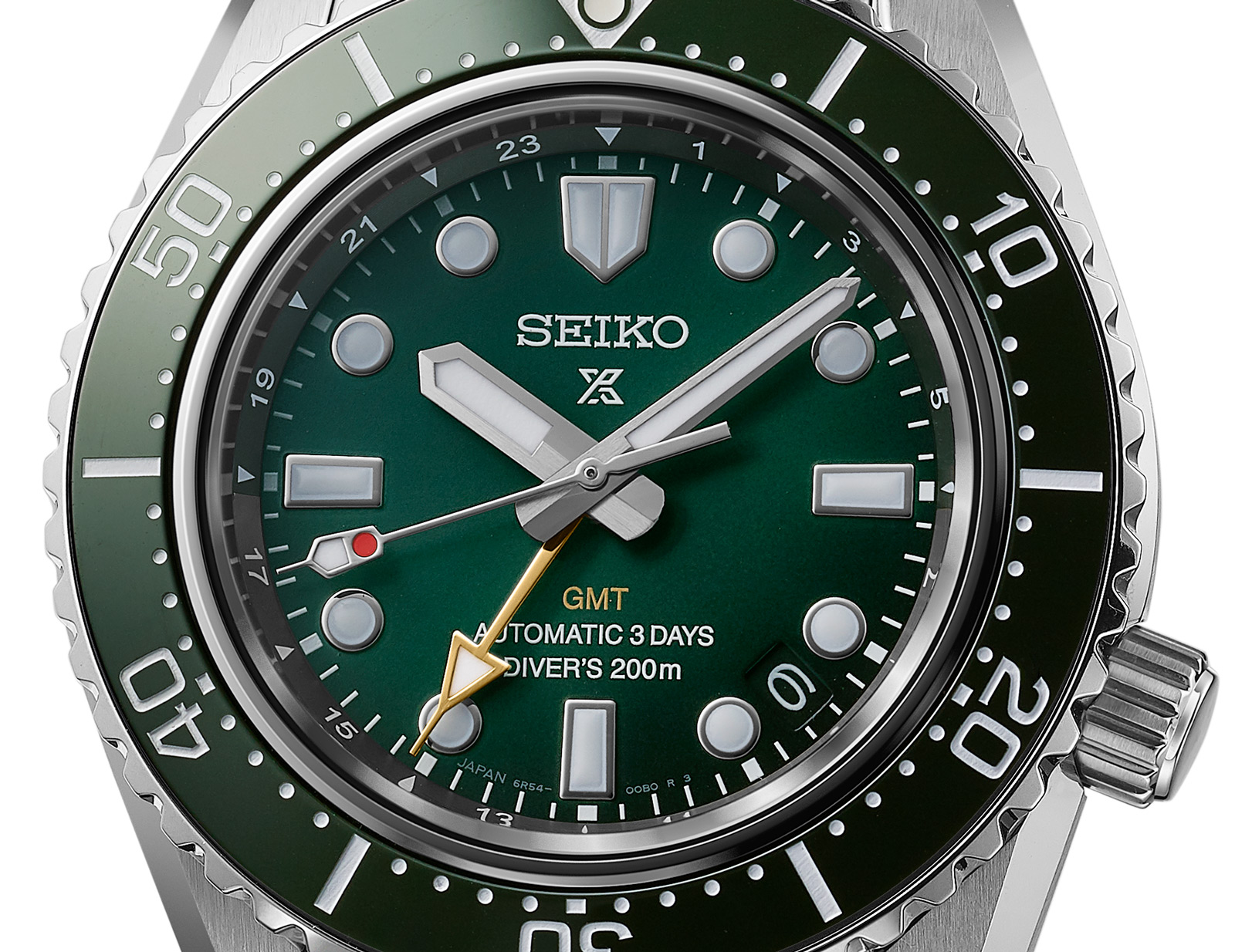
The SPB381
Though it is a two-time zone watch, the Diver’s GMT is still primarily a dive watch. So it retains the traditional elapsed time bezel and clever places the 24-hour scale on the flange around the dial.
That said, the Diver’s GMT is more accurately a dual time zone watch with an independently adjustable 24-hour hand, rather than a true GMT that has an adjustable local-time hour hand (as found in pricier Grand Seiko models). This means a few extra steps when setting the time for a change in time zones, though it is a perfectly acceptable compromise considering the price.
At US$1,500 for the standard models and US$1,700 for the limited edition, the Diver’s GMT sits in a sweet spot. They are affordable in absolute terms, but also well positioned relative to Seiko’s other watches, offering much better fit and finish than the entry-level Seiko 5 Sports GMT for instance.
A practical retro diver
The Diver’s GMT is modelled on the Seiko Hi-Beat 300 m diver ref. 6159-7001 that was released in 1968. It retains the same overall design, with the exception of a relocated date window that went from three o’clock to between four and five o’clock.
The new GMT makes it debut in three distinct colourways: a pair of regular product models in green (SPB381) and black (SPB383), as well as a limited edition with an pale blue dial (SPB385) that’s part of the brand’s offerings to mark the 110th anniversary of its first watch.
The limited edition features a textured dial similar to that found in last year’s Prospex SPB333. According to Seiko, the texture is inspired by glaciers, a nod to the Japanese expeditions to the polar regions in the 1960s and 1970s, whose members were all kitted out with Seiko timekeepers.
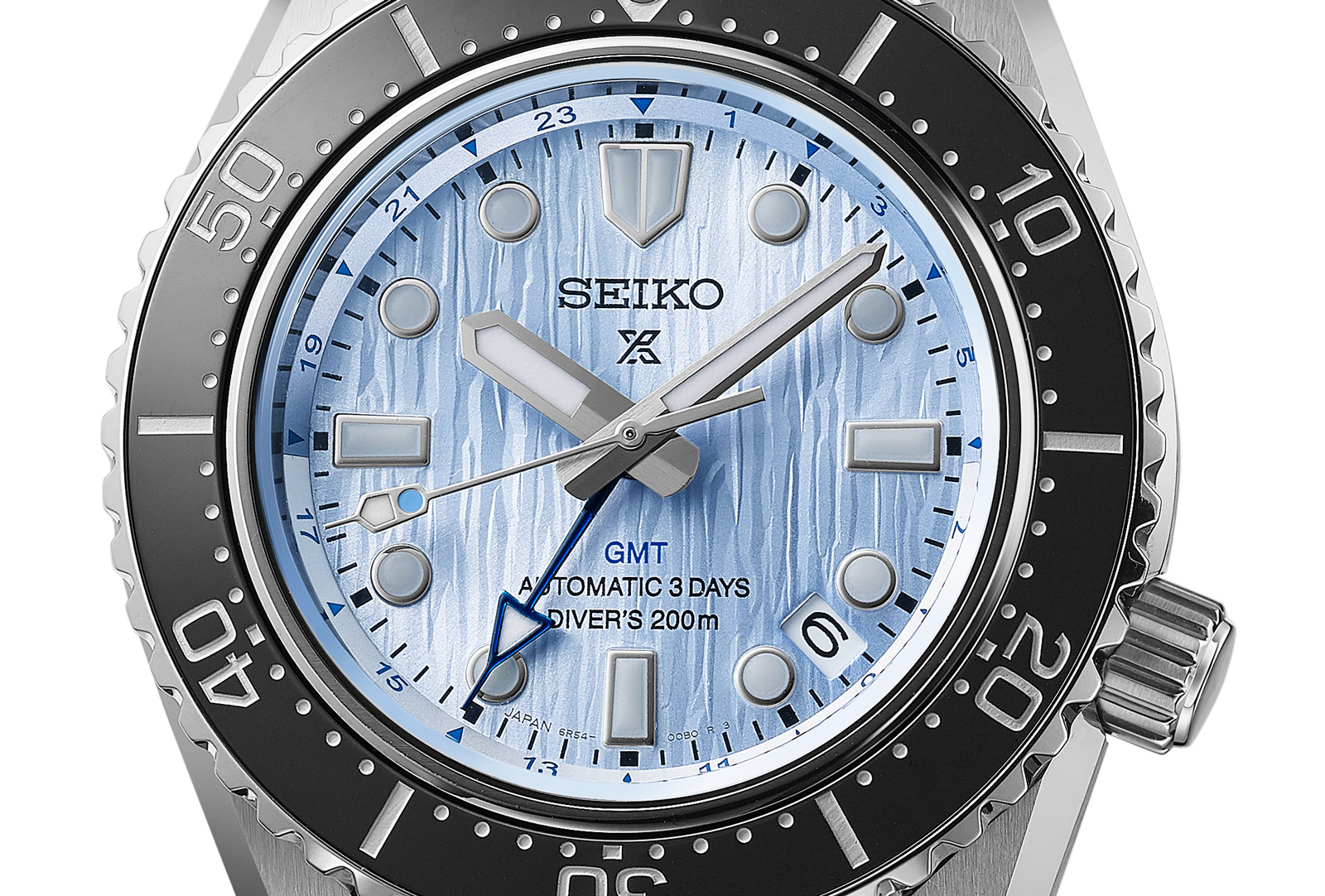
The “ice blue” SPB385
All of three versions share the same case that’s 42 mm in diameter and 12.9 mm high. It retains the design of the 1968 original with the cushion-shaped outline and the crown at four o’clock. As is standard for Prospex dive watches, the case is equipped with a unidirectional rotating bezel with a ceramic insert.
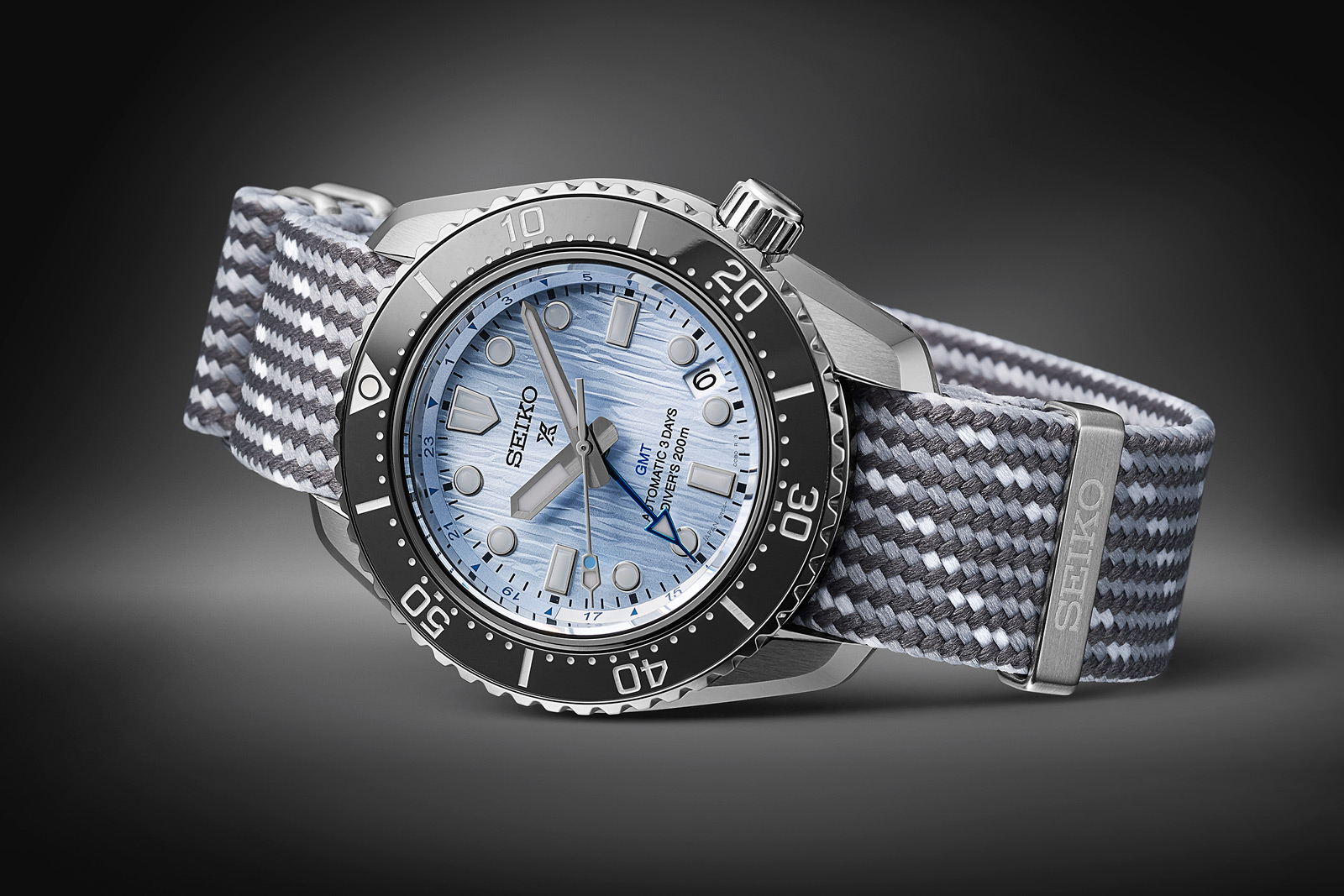
The SPB385 is delivered with an additional grey and white fabric strap woven from recycled PET bottles with a traditional technique known as ‘seichu’
The Diver’s GMT is powered by the brand-new cal. 6R54. A variant of the automatic cal. 6R35, the new calibre has been reworked to add the second time zone hand along with a slightly lengthened power reserve of 72 hours.
Because the second time zone hand is an add-on to an existing calibre, the watch has to be set to local time before adjusting the 24-hour hand to show home time. This is done with the crown in its second position; turning the crown clockwise advances the 24-hour hand while turning it counterclockwise changes the date.
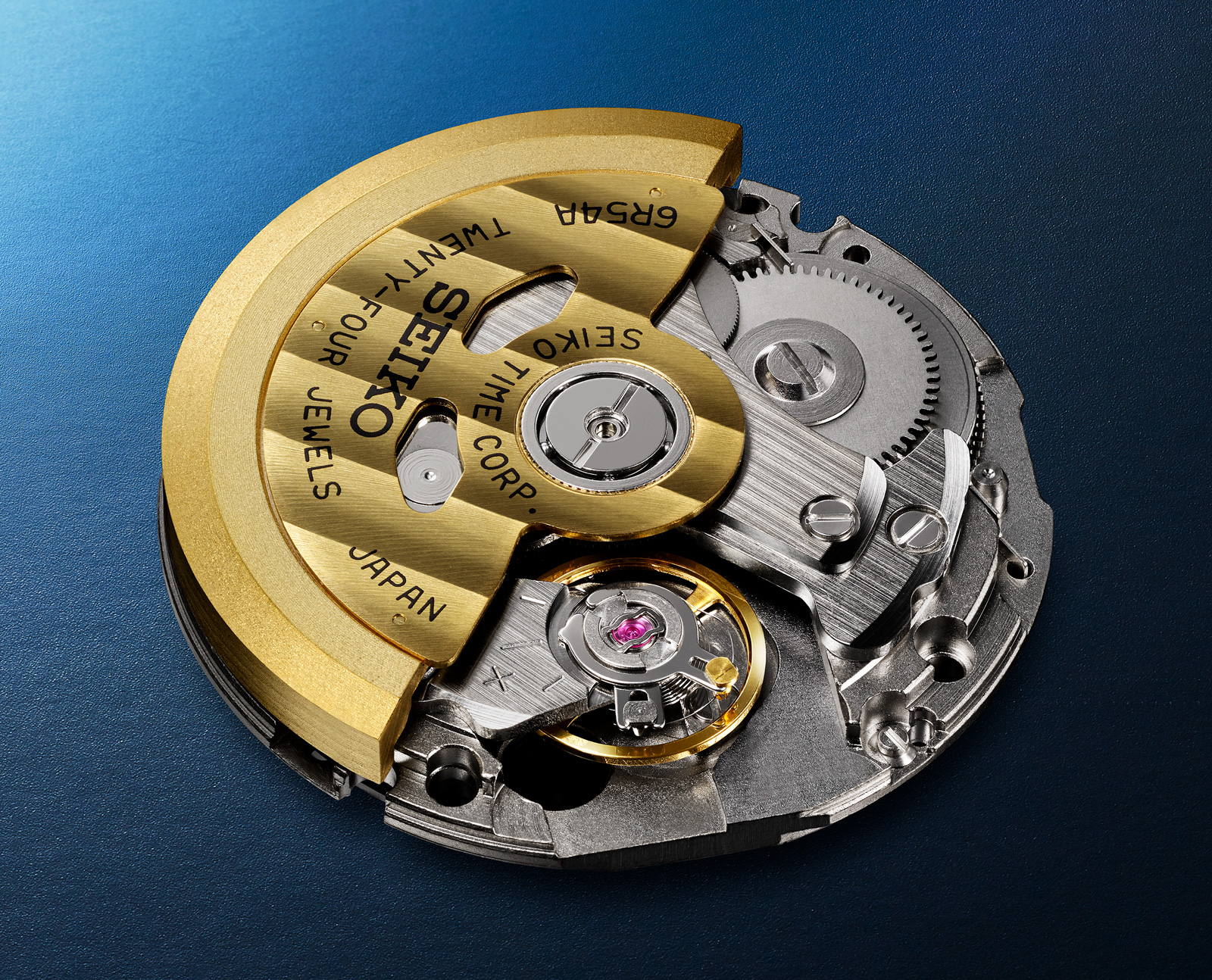
The 6R54
Key Facts and Price
Seiko Prospex 1968 Diver’s GMT
Ref. SPB381 (green)
Ref. SPB383 (black)
Diameter: 42 mm
Height: 12.9 mm
Material: Steel
Crystal: Sapphire
Water resistance: 200 m
Movement: Cal. 6R54
Functions: Hours, minutes, seconds, date, and second time zone hand
Frequency: 21,600 beats per hour (3 Hz)
Winding: Automatic
Power reserve: 72 hours
Strap: Steel bracelet
Limited edition: No
Availability: Starting June 2023 at Seiko boutiques and retailers
Price: US$1,500
Key Facts and Price
Seiko Prospex Save the Ocean “Seiko Watchmaking 110th Anniversary”
Ref. SPB385
Diameter: 42 mm
Height: 12.9 mm
Material: Steel
Crystal: Sapphire
Water resistance: 200 m
Movement: Cal. 6R54
Functions: Hours, minutes, seconds, date, and second time zone hand
Frequency: 21,600 beats per hour (3 Hz)
Winding: Automatic
Power reserve: 72 hours
Strap: Steel bracelet, additional fabric strap
Limited edition: 4000 pieces
Availability: Starting June 2023 at Seiko boutiques and retailers
Price: US$1,700
For more, visit seikowatches.com.
This was brought to you in partnership with Seiko.
Back to top.
